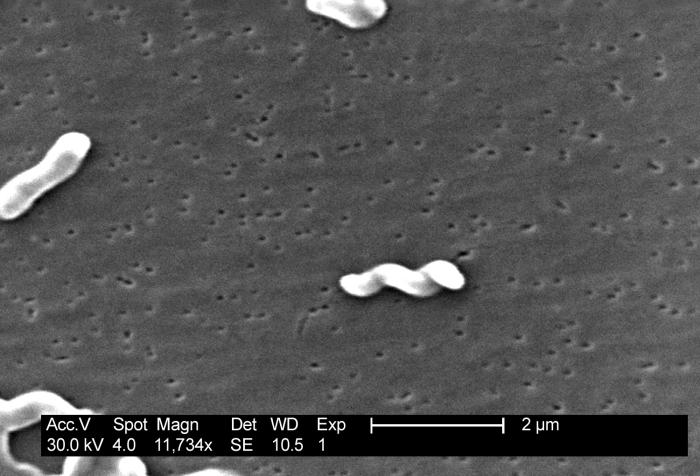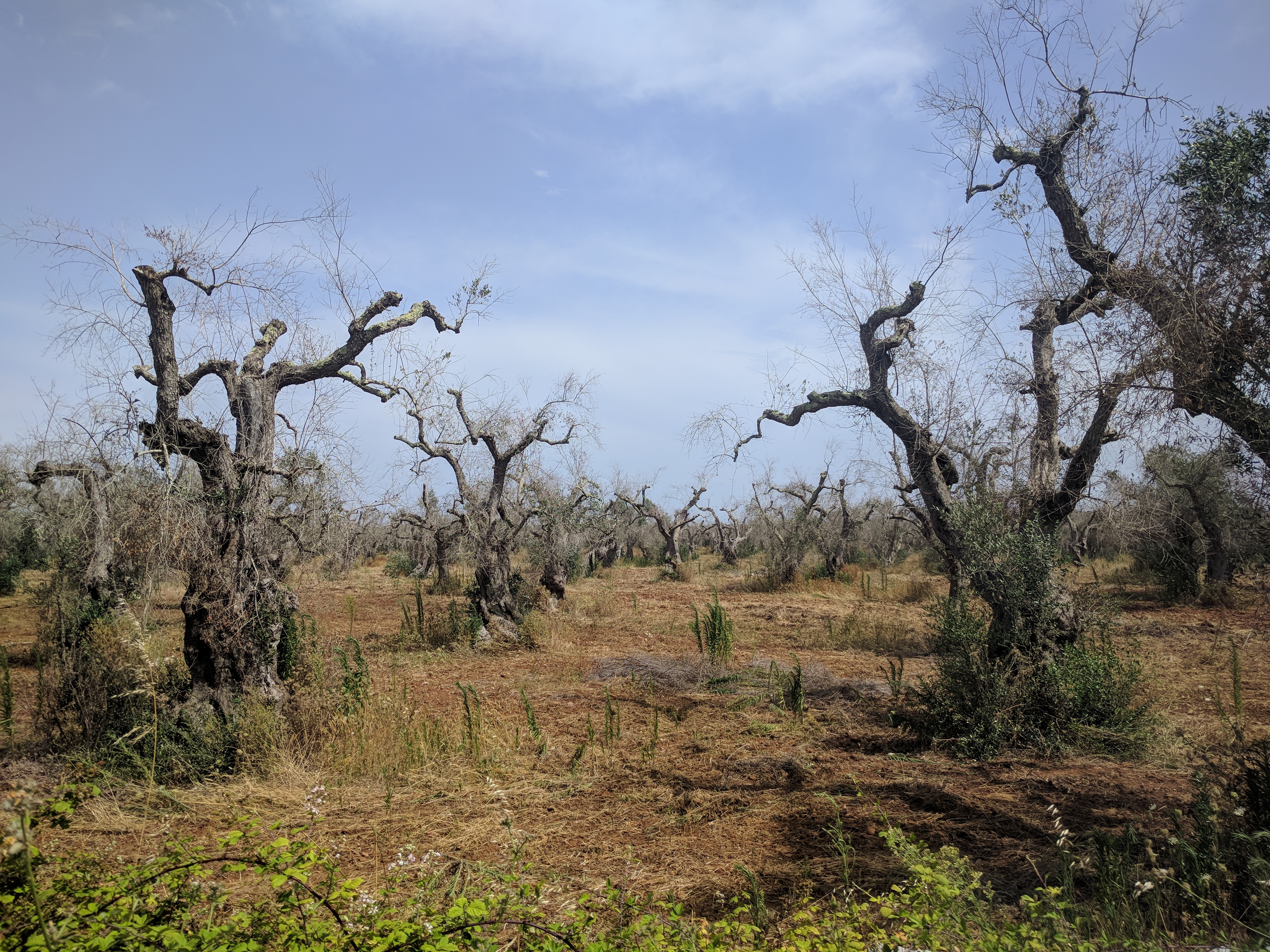|
HisB
The hisB gene, found in the enterobacteria (such as '' E. coli''), in ''Campylobacter jejuni'' and in '' Xylella''/''Xanthomonas'' encodes a protein involved in catalysis of two step in histidine biosynthesis (the sixth and eight step), namely the bifunctional Imidazoleglycerol-phosphate dehydratase/histidinol-phosphatase. The former function (), found at the N-terminal, dehydrated d-erythroimidazoleglycerolphosphate to imidazoleacetolphosphate, the latter function (), found at the C-terminal, dephosphorylates l-histidinolphosphate producing histidinol. The firth step is catalysed instead by histadinolphosphate aminotransferase (encoded by ''hisC'') The peptide is 40.5kDa and associates to form a hexamer (unless truncated) In E. coli hisB is found on the hisGDCBHAFI operon The phosphatase activity possess a substrate ambiguity and overexpression of hisB can rescue phosphoserine phosphatase (serB) knockouts. Reactions hisB-N :D-erythro-1-(imidazol-4-yl)glycerol 3-phosphate \ ... [...More Info...] [...Related Items...] OR: [Wikipedia] [Google] [Baidu] |
Enterobacteriaceae
Enterobacteriaceae is a large family (biology), family of Gram-negative bacteria. It was first proposed by Rahn in 1936, and now includes over 30 genera and more than 100 species. Its classification above the level of family is still a subject of debate, but one classification places it in the order Enterobacterales of the class Gammaproteobacteria in the phylum Pseudomonadota. In 2016, the description and members of this family were emended based on comparative genomic analyses by Adeolu et al. Enterobacteriaceae includes, along with many harmless Symbiosis, symbionts, many of the more familiar pathogenic bacteria, pathogens, such as ''Salmonella'', ''Escherichia coli'', ''Klebsiella'', and ''Shigella''. Other disease-causing bacteria in this family include ''Enterobacter'' and ''Citrobacter''. Members of the Enterobacteriaceae can be Bacterial taxonomy#Nomenclature, trivially referred to as enterobacteria or "enteric bacteria",as several members live in the intestines of anim ... [...More Info...] [...Related Items...] OR: [Wikipedia] [Google] [Baidu] |
Escherichia Coli
''Escherichia coli'' (),Wells, J. C. (2000) Longman Pronunciation Dictionary. Harlow ngland Pearson Education Ltd. also known as ''E. coli'' (), is a Gram-negative, facultative anaerobic, rod-shaped, coliform bacterium of the genus ''Escherichia'' that is commonly found in the lower intestine of warm-blooded organisms. Most ''E. coli'' strains are harmless, but some serotypes ( EPEC, ETEC etc.) can cause serious food poisoning in their hosts, and are occasionally responsible for food contamination incidents that prompt product recalls. Most strains do not cause disease in humans and are part of the normal microbiota of the gut; such strains are harmless or even beneficial to humans (although these strains tend to be less studied than the pathogenic ones). For example, some strains of ''E. coli'' benefit their hosts by producing vitamin K2 or by preventing the colonization of the intestine by pathogenic bacteria. These mutually beneficial relationships between ''E. col ... [...More Info...] [...Related Items...] OR: [Wikipedia] [Google] [Baidu] |
Campylobacter Jejuni
''Campylobacter jejuni'' () is a species of pathogenic bacteria, one of the most common causes of food poisoning in Europe and in the US. The vast majority of cases occur as isolated events, not as part of recognized outbreaks. Active surveillance through the Foodborne Diseases Active Surveillance Network (FoodNet) indicates that about 20 cases are ''diagnosed'' each year for each 100,000 people in the US, while many more cases are undiagnosed or unreported; the CDC estimates a total of 1.5 million infections every year. The European Food Safety Authority reported 246,571 cases in 2018, and estimated approximately nine million cases of human campylobacteriosis per year in the European Union. ''Campylobacter'' is a genus of bacteria that is among the most common causes of bacterial infections in humans worldwide. Campylobacter means "curved rod", deriving from the Greek ''kampylos ''(curved) and ''baktron'' (rod). Of its many species, ''C. jejuni'' is considered one of the most im ... [...More Info...] [...Related Items...] OR: [Wikipedia] [Google] [Baidu] |
Xylella
''Xylella fastidiosa'' is an aerobic, Gram-negative bacterium, Gram-negative bacterium of the genus ''Xylella''. It is a plant pathogen, that grows in the water transport tissues of plants (Xylem, xylem vessels) and is transmitted exclusively by xylem sap-feeding insects such as Sharpshooter (insect), sharpshooters and Aphrophoridae, spittlebugs. Many plant diseases are due to infections of ''X. fastidiosa'', including bacterial leaf scorch, oleander leaf scorch, coffee leaf scorch (CLS), alfalfa dwarf, phony peach disease, and the economically important Pierce's disease of grapes (PD), olive quick decline syndrome (OQDS), and citrus variegated chlorosis (CVC). While the largest outbreaks of ''X. fastidiosa''–related diseases have occurred in the Americas and Europe, this pathogen has also been found in Taiwan, Israel, and a few other countries worldwide. ''Xylella fastidiosa'' can infect an extremely wide range of plants, many of which do not show any symptoms of disease. Dise ... [...More Info...] [...Related Items...] OR: [Wikipedia] [Google] [Baidu] |
Xanthomonas
''Xanthomonas'' (from greek: ''xanthos'' – “yellow”; ''monas'' – “entity”) is a genus of bacteria, many of which cause plant diseases. There are at least 27 plant associated ''Xanthomonas spp.'', that all together infect at least 400 plant species. Different species typically have specific host and/or tissue range and colonization strategies. Taxonomy The genus ''Xanthomonas'' has been subject of numerous taxonomic and phylogenetic studies and was first described as ''Bacterium vesicatorium'' as a pathogen of pepper and tomato in 1921. Dowson later reclassified the bacterium as ''Xanthomonas campestris'' and proposed the genus ''Xanthomonas''.''Xanthomonas'' was first described as a monotypic genus and further research resulted in the division into two groups, A and B. Later work using DNA:DNA hybridization has served as a framework for the general ''Xanthomonas'' species classification. Other tools, including multilocus sequence analysis and amplified fragment-length ... [...More Info...] [...Related Items...] OR: [Wikipedia] [Google] [Baidu] |
Histidine
Histidine (symbol His or H) is an essential amino acid that is used in the biosynthesis of proteins. It contains an α-amino group (which is in the protonated –NH3+ form under biological conditions), a carboxylic acid group (which is in the deprotonated –COO− form under biological conditions), and an imidazole side chain (which is partially protonated), classifying it as a positively charged amino acid at physiological pH. Initially thought essential only for infants, it has now been shown in longer-term studies to be essential for adults also. It is encoded by the codons CAU and CAC. Histidine was first isolated by Albrecht Kossel and Sven Gustaf Hedin in 1896. It is also a precursor to histamine, a vital inflammatory agent in immune responses. The acyl radical is histidyl. Properties of the imidazole side chain The conjugate acid (protonated form) of the imidazole side chain in histidine has a p''K''a of approximately 6.0. Thus, below a pH of 6, the imidazole ring ... [...More Info...] [...Related Items...] OR: [Wikipedia] [Google] [Baidu] |
Imidazoleglycerol-phosphate Dehydratase
The enzyme imidazoleglycerol-phosphate dehydratase () catalyzes the chemical reaction :D-erythro-1-(imidazol-4-yl)glycerol 3-phosphate \rightleftharpoons 3-(imidazol-4-yl)-2-oxopropyl phosphate + H2O This enzyme belongs to the family of lyases, specifically the hydro-lyases, which cleave carbon-oxygen bonds. The systematic name of this enzyme class is D-''erythro''-1-(imidazol-4-yl)glycerol-3-phosphate hydro-lyase -(imidazol-4-yl)-2-oxopropyl-phosphate-forming''. Other names in common use include IGP dehydratase, and D-''erythro''-1-(imidazol-4-yl)glycerol 3-phosphate hydro-lyase. This enzyme participates in histidine metabolism as it is involved in the 6th step of histidine biosynthesis as part of a nine step cyclical pathway. There are two isoforms of IGPD; IGPD1 and IGPD2. The different isoforms are highly conserved with only 8 amino acids differing between them. These subtle differences however affect their activity but as yet it is unknown how. In most organisms IGPD is ... [...More Info...] [...Related Items...] OR: [Wikipedia] [Google] [Baidu] |
Histidinol-phosphatase
The enzyme histidinol-phosphatase (EC 3.1.3.15) catalysis, catalyzes the reaction :L-histidinol phosphate + H2O \rightleftharpoons L-histidinol + phosphate This enzyme participates in histidine metabolism. Nomenclature This enzyme belongs to the family of hydrolases, to be specific, those acting on phosphoric ester, monoester bonds. The List of enzymes, systematic name is L-histidinol-phosphate phosphohydrolase. Other names in common use include histidinol phosphate phosphatase, L-histidinol phosphate phosphatase, histidinolphosphate phosphatase, HPpase, and histidinolphosphatase. ''E. coli'' In ''E. coli'' the enzyme encoded by the gene ''hisB'' is a fused imidazoleglycerol-phosphate dehydratase and histidinol-phosphatase. References Further reading * EC 3.1.3 Enzymes of known structure {{3.1-enzyme-stub ... [...More Info...] [...Related Items...] OR: [Wikipedia] [Google] [Baidu] |
N-terminal
The N-terminus (also known as the amino-terminus, NH2-terminus, N-terminal end or amine-terminus) is the start of a protein or polypeptide, referring to the free amine group (-NH2) located at the end of a polypeptide. Within a peptide, the amine group is bonded to the carboxylic group of another amino acid, making it a chain. That leaves a free carboxylic group at one end of the peptide, called the C-terminus, and a free amine group on the other end called the N-terminus. By convention, peptide sequences are written N-terminus to C-terminus, left to right (in LTR writing systems). This correlates the translation direction to the text direction, because when a protein is translated from messenger RNA, it is created from the N-terminus to the C-terminus, as amino acids are added to the carboxyl end of the protein. Chemistry Each amino acid has an amine group and a carboxylic group. Amino acids link to one another by peptide bonds which form through a dehydration reaction that j ... [...More Info...] [...Related Items...] OR: [Wikipedia] [Google] [Baidu] |
C-terminal
The C-terminus (also known as the carboxyl-terminus, carboxy-terminus, C-terminal tail, C-terminal end, or COOH-terminus) is the end of an amino acid chain (protein or polypeptide), terminated by a free carboxyl group (-COOH). When the protein is translated from messenger RNA, it is created from N-terminus to C-terminus. The convention for writing peptide sequences is to put the C-terminal end on the right and write the sequence from N- to C-terminus. Chemistry Each amino acid has a carboxyl group and an amine group. Amino acids link to one another to form a chain by a dehydration reaction which joins the amine group of one amino acid to the carboxyl group of the next. Thus polypeptide chains have an end with an unbound carboxyl group, the C-terminus, and an end with an unbound amine group, the N-terminus. Proteins are naturally synthesized starting from the N-terminus and ending at the C-terminus. Function C-terminal retention signals While the N-terminus of a protein often cont ... [...More Info...] [...Related Items...] OR: [Wikipedia] [Google] [Baidu] |
HIS3
The HIS3 gene, found in the ''Saccharomyces cerevisiae'' yeast, encodes a protein called Imidazoleglycerol-phosphate dehydratase which catalyses the sixth step in histidine biosynthesis. It is analogous to hisB in ''Escherichia coli''. Exploits Mutations in ''Escherichia colis analogous gene, hisB allows researchers to select only those individuals expressing the HIS3 gene included on a plasmid. The HIS3 gene is coupled to a certain promoter which can only be activated by successful binding of the relevant transcription factors. This is used in certain methods of bacterial two-hybrid screening Two-hybrid screening (originally known as yeast two-hybrid system or Y2H) is a molecular biology technique used to discover protein–protein interactions (PPIs) and protein–DNA interactions by testing for physical interactions (such as bindi ... to allow the survival of ''E. coli'' in which a desired protein-DNA or protein-protein interaction is taking place. References Sa ... [...More Info...] [...Related Items...] OR: [Wikipedia] [Google] [Baidu] |




